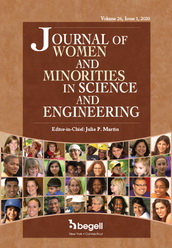
Erscheint 6 Ausgaben pro Jahr
ISSN Druckformat: 1072-8325
ISSN Online: 1940-431X
Indexed in
PREDICTING DEGREE ATTAINMENT IN ENGINEERING AND BIOLOGICAL/LIFE SCIENCES: AN EXPLORATORY STUDY
 Get access
Get access
ABSTRAKT
Using the 1996−1997 Florida high school graduating cohort, the relationships among a number of factors predictive of attaining a science, technology, engineering, and mathematics (STEM) undergraduate degree are examined. Women were found to be less likely than men to attain a STEM degree or an engineering degree but more likely to attain a biological/life sciences degree. Compared to Whites, Asians were twice as likely to attain a STEM degree and Blacks were one and a half times as likely to attain a STEM degree. The longer a student spent pursuing the degree, the higher were the odds of STEM or engineering degree attainment but the lower were the odds of a biological/ life sciences degree attainment. Higher high school grade point average scores were associated with higher odds of STEM degree or engineering degree attainment. While in college, when the number of quarters of work was higher the odds of either STEM or engineering degree attainment were lower but the odds of biological/life sciences degree attainment were higher. The relationships between the annual salaries earned while in college and STEM, engineering, or biological/life sciences degree attainments are mixed.
-
Creative Writing Across the Curriculum, 40, 2022. Crossref